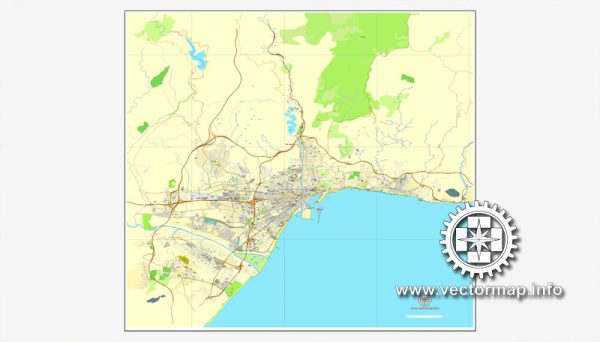Malaga, located in the southern part of Spain on the Costa del Sol, has a rich history of urban development that spans thousands of years. The city has been shaped by various civilizations and cultures, each leaving its mark on the architectural and cultural landscape. Here’s an overview of the history of urban development in Malaga:
- Phoenician and Carthaginian Period (8th to 3rd centuries BCE):
- Malaga’s history can be traced back to the Phoenician period when it was founded by the Phoenicians in the 8th century BCE. The settlement served as a trading post, benefiting from its strategic location along the Mediterranean coast.
- Roman Period (3rd century BCE to 5th century CE):
- The Romans took control of Malaga in the 2nd century BCE, and the city flourished under Roman rule. Roman architectural elements, such as theaters and aqueducts, were introduced during this period.
- Visigothic and Byzantine Period (5th to 7th centuries):
- The fall of the Roman Empire saw Malaga pass through the hands of the Visigoths and later the Byzantines. However, this period is characterized by a decline in urban development.
- Islamic Period (8th to 15th centuries):
- One of the most significant phases in Malaga’s history was the Islamic period. The Moors, led by the Umayyad Caliphate, transformed the city into a thriving cultural and economic center. They built the Alcazaba, a fortress overlooking the city, and the Gibralfaro Castle. The historic center of Malaga still bears the imprint of Moorish urban planning.
- Christian Reconquista and Renaissance (15th to 17th centuries):
- Malaga was reconquered by the Catholic Monarchs, Ferdinand and Isabella, in 1487. The city underwent a Christian transformation, and new structures, including churches and palaces, were built. The Cathedral of Malaga, a prominent example of Spanish Renaissance architecture, was constructed during this period.
- 18th and 19th Centuries:
- Malaga experienced economic growth and urban expansion during the 18th century. The city became a major center for trade and commerce, and its port played a crucial role in connecting Spain with its American colonies. Neoclassical and Baroque architectural styles left their mark on this period.
- 20th Century:
- Malaga faced economic challenges in the early 20th century, but it underwent significant growth and modernization in the latter half. The city became a popular tourist destination, leading to the development of infrastructure such as hotels, resorts, and cultural facilities.
- Contemporary Period:
- In recent decades, Malaga has continued to evolve as a dynamic and cosmopolitan city. Urban development projects have focused on revitalizing the historic center, improving transportation infrastructure, and enhancing cultural amenities.
Throughout its history, Malaga’s urban development has been shaped by the interplay of diverse cultures and historical events, creating a cityscape that reflects its rich and complex heritage. Today, visitors can explore this layered history through the city’s architecture, museums, and vibrant street life.


 Author: Kirill Shrayber, Ph.D.
Author: Kirill Shrayber, Ph.D.